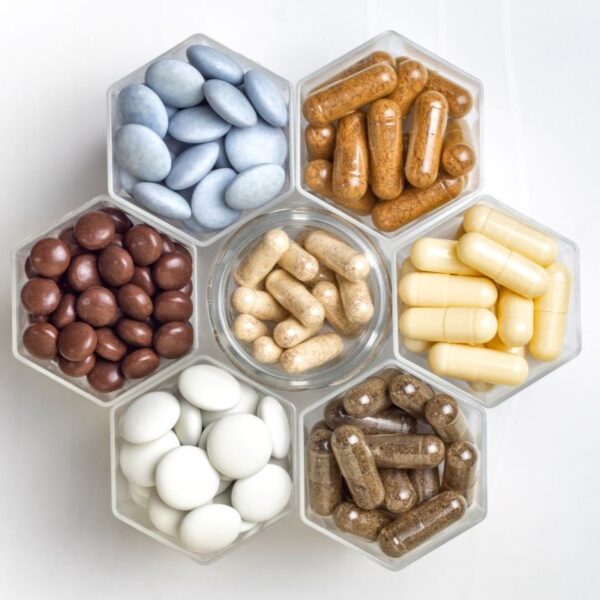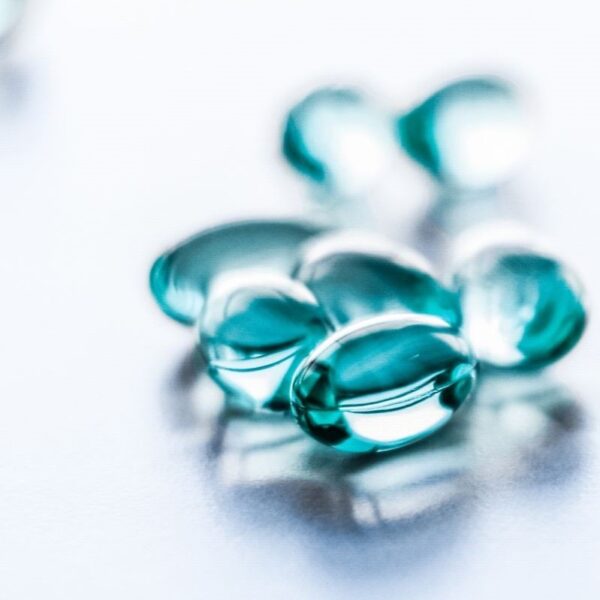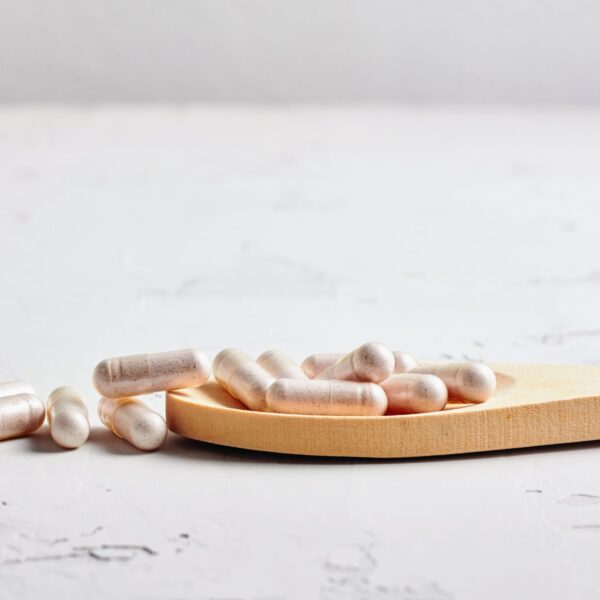BHA (butylated hydroxyanisole) and BHT (butylated hydroxytoluene) are synthetic antioxidants.
They are the most widely used antioxidants in food due to their low cost, high performance, and wide availability. They are prevalent in products containing lipids. Oxidation occurs when fats and oils are exposed to oxygen, causing them to become rancid and develop off-flavors and odors. BHA and BHT prevent this process by scavenging free radicals, highly reactive molecules that initiate oxidation.
What are BHA and BHT?
BHA consists of two isomeric organic compounds: 2-tert-butyl-4-hydroxyanisole and 3-tert-butyl-4-hydroxyanisole. BHA is a derivative of anisole, which is an aromatic compound containing a methoxy group (-OCH3) attached to a benzene ring. In BHA, the methoxy group is substituted with a tert-butyl group (-C(CH3)3), and the hydroxy group (-OH) is attached to the benzene ring. The chemical structure of BHA is given below.
Source: Wikipedia
The structure of BHT consists of a phenol group (-OH) attached to a benzene ring, with two tert-butyl groups (-C(CH3)3) attached to the benzene ring. The tert-butyl groups provide steric hindrance, making it difficult for reactive species to attack the phenol group. The chemical structure of BHT is given below.
Source: Wikipedia
How are BHA and BHT Produced?
In synthesizing BHA from hydroquinone, tertiary butyl hydroquinone (TBHQ) reacts about 30°C to 50°C with a stoichiometrically slight excess of dimethyl sulfate and sodium hydroxide. BHA is formed in this reaction and is recovered in crystalline form.
The chemical synthesis of BHT involves the reaction of p-cresol (4-methylphenol) with isobutylene (2-methylpropene), catalyzed by sulfuric acid.
Applications in Food and Nutrition
| Function | Applications |
| Antioxidant | Antioxidants preserve oils, fats, and shortening from oxidative rancidity and prevent the formation of potentially toxic degradation products and polymers. |
| Preservative | BHA and BHT preserve food products by preventing changes in taste, color, and odor over time. |
Product Examples
| Type | Examples |
| Lipids & Lipid Products | Cooking oil, edible oil, butter, shortenings |
| Beverages | Beer |
| Savory | Snacks, dehydrated potatoes |
| Bakery | All baked goods |
| Others | Meats, cereals, chewing gum |
Properties of BHA and BHT
| BHA | BHT | |
| Physical Form | Solid, waxy | Powder |
| Color | Yellow to white | Yellow to white |
| Odor | Characteristic | Slightly phenolic |
| Storage Temperature & Conditions | 15-25°C | 15-25°C |
| Appearance | Colorless-to-pale-yellow crystals or powder | Colorless-to-pale-yellow crystals or powder |
| Density | 1.06 g/cm³ | 1.03-1.05 g/cm³ |
| Molar Mass | 180.247 g/mol | 220.34 g/mol |
| Melting Point | 48-55°C | 70°C |
| Boiling Point | 264-270°C | 265°C |
| Flash Point | 156.11°C | 127°C |
| log P | 3.78 | 5.32 |
| Solubility | > 1 mg/ml | 0.00006 g/100 ml at 25°C |
Typical Formulations
Antioxidant System for Oils
Here is an example of an antioxidant mix formulated with BHA, along with the % weight of ingredients:
| Ingredient | Composition |
| Gallic acid | 7% |
| Propyl gallate | 12% |
| BHA | 5% |
| Citric acid | 5% |
| Mono-propylene glycol | 27% |
| Propionic acid | 20% |
| Monoglycerides | 29% |
The above formulation provides a substantial oil and fat-free single-phase, homogenous antioxidant system readily dispersed in lipid matrices at ambient temperatures by gentle stirring. The formulation includes a phenolic antioxidant compound, a liquid carrier, a metal chelator, an emulsifier, and a polarity modifier. A combination of lipid-soluble and water-soluble antioxidant compounds is included to provide an improved antioxidant effect.
Source: Google Patents
Blackcurrant Seed Oil Suspension
Here is an example of an active oil suspension formulated with BHA, along with the % weight of ingredients:
| Ingredient | Composition |
| Blackcurrant seed oil | 1.2% |
| Beta carotene dispersion | 0.33% |
| Antioxidant (BHA, BHT, α-tocopherol) | 0.3% |
| Emulsifier (Tween 60, Tween 40) | 9% |
| Water | to 100% |
The above formulation is a stable aqueous composition of biologically active blackcurrant seed oil to prepare optically clear products. An antioxidant system was added for improved stability of the lipid substances.
Source: Google Patents
BHA and BHT Formulation Considerations
| Stability | Decomposes on burning and decomposes on contact with oxidizing materials |
| Dosage | 0.05-0.5% or more, according to application and desired effect |
| Interaction with Other Components | Both molecules are incompatible with ferric salts |
Working Principles
Oxidation
The initiation, propagation, and termination processes of the self-catalyzed peroxidation chain reaction for lipids are generally presented as follows:
Initiation: RH – catalyst → R• + H•
RH + O2 – catalyst → R• + •OOH
Propagation: R• + O2 → ROO•
ROO• + RH → ROOH + R•
Termination: ROO• + ROO• → ROOR + O2
ROO• + R• → ROOR
R•+ R• → RR
This process is catalyzed by light, heat, traces of transition metals, the presence of oxygen, and/or by (metal-catalyzed) decomposition of (hydro)- peroxides.
Effects of Oxidation
Secondary Products: Secondary products of lipid peroxidation resulting from the breakdown of lipid (hydro)peroxides include aldehydes, ketones, alcohols, esters, and short-chain hydrocarbons (e.g., malondialdehyde, pentane, etc.). These impart unpleasant flavors and odors to rancid or reverted fats.
Nutritional Value: A disadvantage of lipid autoxidation products is the decreased nutritional value caused by destroying nutritive food constituents.
Antioxidant Action
Radical scavengers, including BHA and BHT, interfere with the propagation step of the free radical chain reaction. BHA and BHT may donate one hydrogen atom to the lipid radicals R•, RO•, or ROO•, turning them into the more stable molecules RH, ROH, or ROOH, terminating the ongoing lipid autoxidation chain reaction. The species behaves as a synthetic analog of vitamin E, primarily as a terminating agent that suppresses autoxidation.
Synergistic Activity
BHA & BHT: BHA and BHT are often used in cooking oil. In a study conducted on frying oil, during static heating, BHA was found to be a more effective antioxidant than BHT. Whereas, during intermittent frying of potato chips, both the antioxidants were relatively ineffective in retarding the deterioration of the oil. The loss of BHT from the oil during static heating exceeded that of BHA. On the other hand, when potato chips were fried in the oil periodically, a higher loss of BHA was observed. Using BHA and BHT together in animal fats and shortenings has better efficacy than using BHA alone. Another study revealed that if BHA is used alone in animal fats and shortenings, it is less effective than BHT, but its effectiveness increases with the addition of BHT.
BHA, BHT, Propyl Gallate & TBHQ: BHA is usually formulated with other synthetic antioxidants to protect food systems from oxidizing. In a study, when BHA was mixed with a synergist having equivalent antioxidant activity (such as BHT), BHA and the synergist performed antioxidation competitively. When BHA was mixed with a synergist with higher antioxidative activity (such as TBHQ or propyl gallate), the synergist performed antioxidation first, thus protecting BHA from being oxidized until the synergist was completely consumed.
BHA, BHT & Tocopherols: In a study of the synergistic activity of BHA and BHT with tocopherols, the synergistic activity was greater than that of the individual activities. However, the antioxidant activity of BHA and BHT did not increase significantly by adding tocopherols.
Compatibility
Fats from Plant and Animal Origin: Vegetable oils naturally contain phenolic antioxidants like tocopherols. Animal fats, in contrast, are relatively low in tocopherol content, and, although they contain relatively little polyunsaturated lipids, these fats need technological protection by adding antioxidants, such as BHA and BHT. On the other hand, synthetic antioxidants are ineffective in preventing fats and oils of vegetable origin from oxidative deterioration. In a study, BHA provided slight protection to the olive-residue oil, and BHT gave some protection to corn oil, while both antioxidants were relatively ineffective in the other vegetable oils.
High-Temperature Applications: The food industry generally prefers BHT in combination with BHA for stability at higher temperatures rather than vitamin E (mixed tocopherols).
Safety and Regulatory Considerations
| FDA Information | BHA and BHT are listed as food additives permitted for direct addition to food by the FDA as per CFR 172.115 and 172.110. They are allowed to be used alone, individually or in combination together or in combination with other permitted antioxidants in a food system. |
| EU Information | BHA and BHT are permitted food additives in the EU with E numbers E 320 & E 321, respectively. |
Safety and Toxicity of BHA & BHT
BHA and BHT have been extensively studied for potential toxicities. They were found to pose no cancer hazard. Several possible health hazards related to BHA and BHT have been reported and studied, including the following:
Identification Numbers
| BHA | BHT | |
| IUPAC Name | 2-tert-Butyl-4-methoxyphenol and 3-tert-butyl-4-methoxyphenol | 2,6-di-tert-butyl-4-methylphenol |
| CAS Number | 25013-16-5 | 128-37-0 |
| EC Number | 246-563-8 | 204-881-4 |
| E Number (Food Additive) | E 320 | E 321 |
| INS No. (Food Additive) | INS 320 | INS 321 |
| FEMA Number | 2183 | 2184 |
Acceptable Limits or Maximum Usage
The maximum usage level of BHA in food per the FDA is as follows:
| Category | Limitation (ppm) |
| Dehydrated potato shreds | 50 |
| Active dry yeast | 1,000* |
| Beverages and desserts prepared from dry mixes | 2* |
| Dry breakfast cereals | 50 |
| Dry diced glazed fruit | 32* |
| Dry mixes for beverages and desserts | 90* |
| Emulsion stabilizers for shortening | 200 |
| Potato flakes | 50 |
| Potato granules | 10 |
| Sweet potato flakes | 50 |
The above table suggests the maximum allowed usage of BHA and BHT in combination. The values with (*) suggest BHA-only use.
The maximum usage level of BHT in food per the FDA is as follows:
| Category | Limitation (ppm) |
| Dehydrated potato shreds | 50 |
| Dry breakfast cereals | 50 |
| Emulsion stabilizers for shortening | 200 |
| Potato flakes | 50 |
| Potato granules | 10 |
| Sweet potato flakes | 50 |
The maximum usage level for BHA and BHT is as follows:
| Category | Limitation (ppm) |
| Fats and oils essentially free from water | 100 mg/kg (expressed as fat basis) |
| Other fat and oil emulsions | 100 mg/kg (expressed as fat basis) |
| Emulsifiers containing fatty acids | 20 mg/kg singly or in combination (expressed on fat) in the preparation, 0.4 mg/kg in the final product (singly or in combination) |
| Essential oils | 1000 mg/kg (gallates, TBHQ, and BHA, individually or in combination) in the essential oils |
| Flavorings other than essential oils | 100 mg/kg (gallates, individually or in combination) 200 mg/kg (TBHQ and BHA, individually or in combination) inflavorings |
Acceptable Daily Intake
The ADI for BHA has been set to be 0.5 mg/kg bw as per the JECFA. The ADI for BHT is 0.3 mg/kg bw.
Fun Facts About BHA and BHT
- In the United States, manufacturers don’t need to list BHA and BHT by name on food labels. They are often listed as “antioxidants” or with their E numbers in the ingredient list.
- BHA and BHT are used in the food industry and in producing rubber, petroleum products, pharmaceuticals, and cosmetics. Their antioxidant properties help prevent degradation and extend the lifespan of various products.








